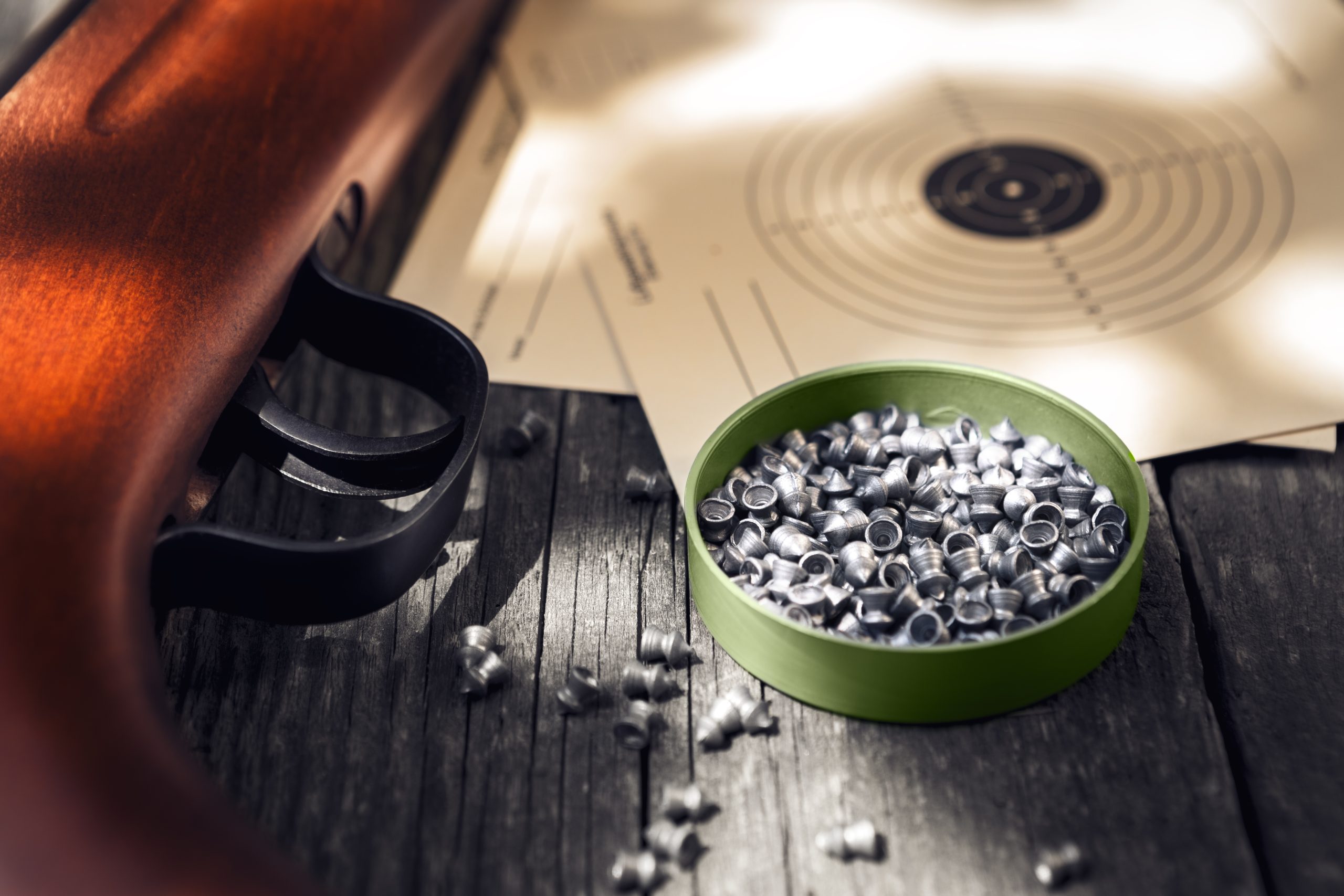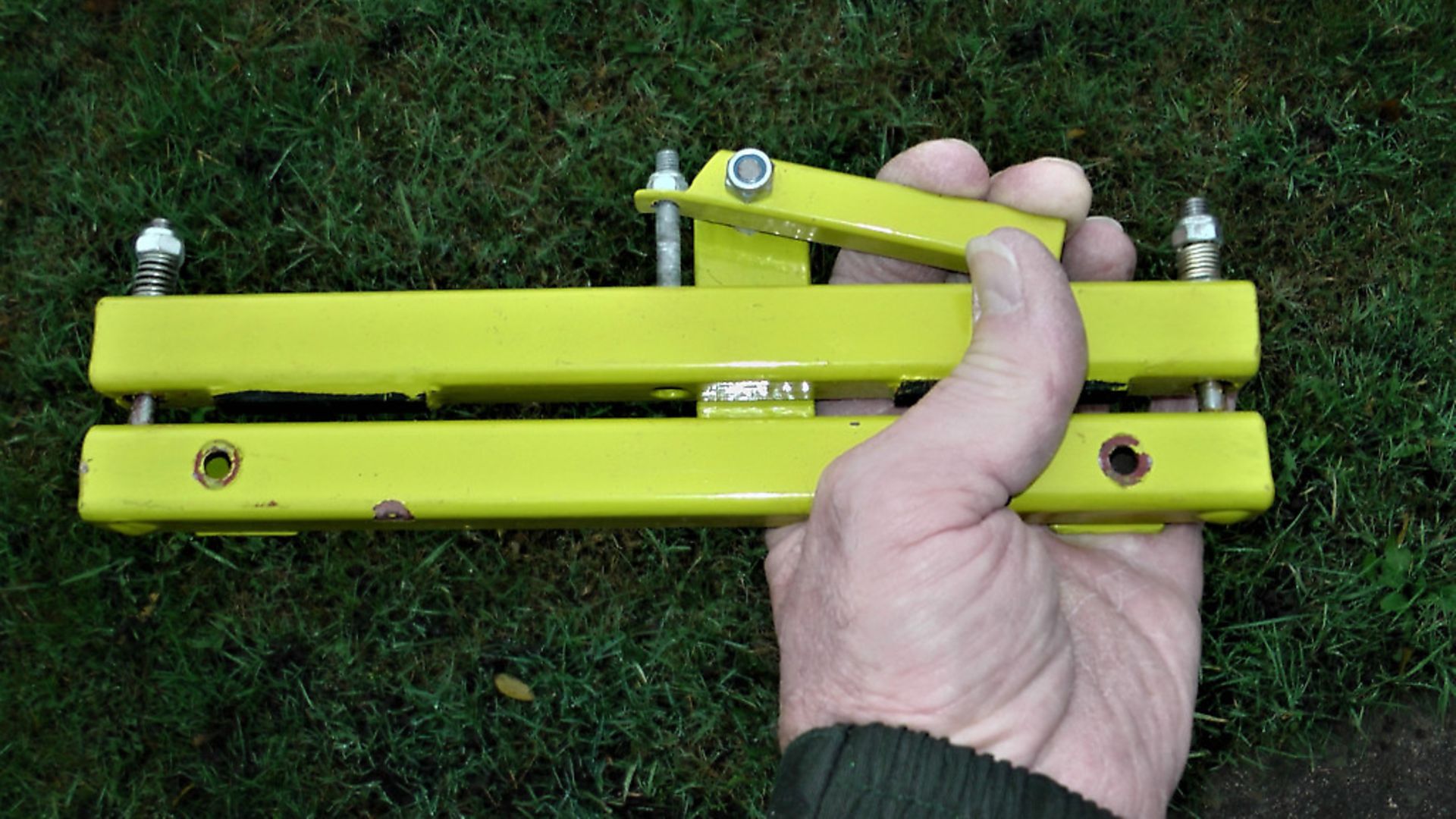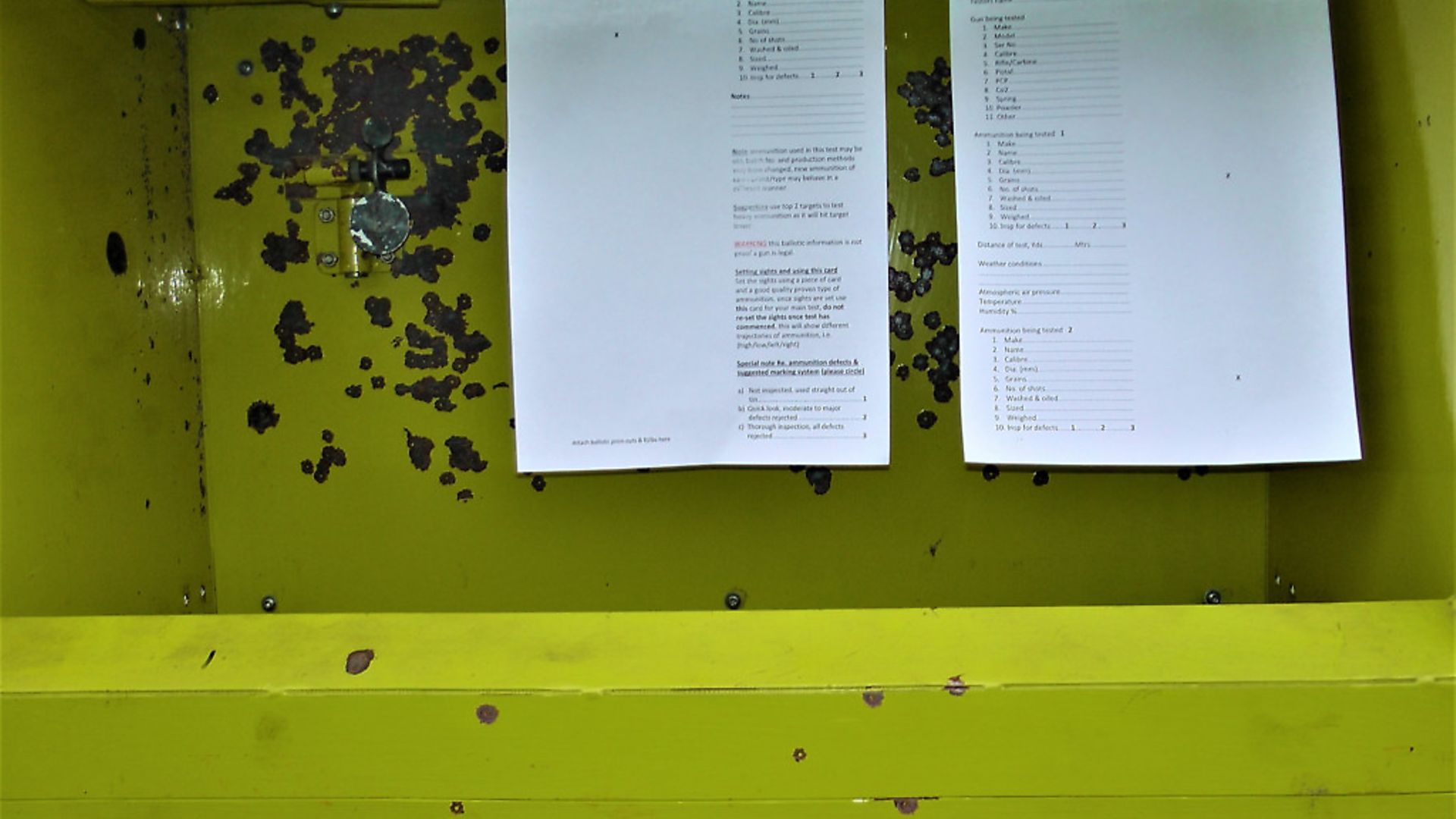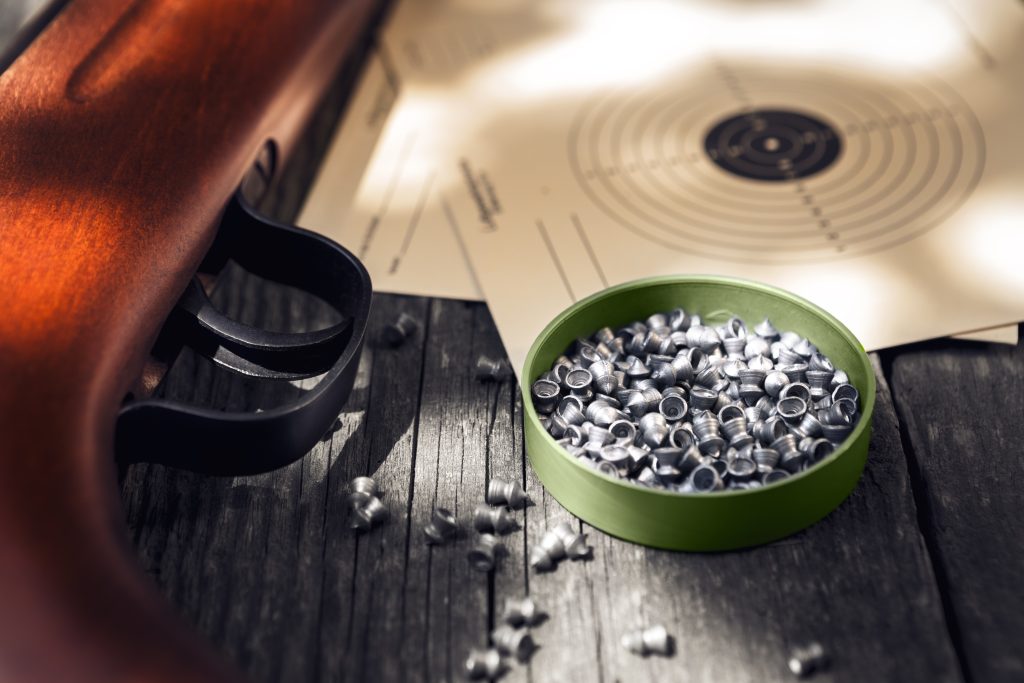News
A reader’s DIY gun vice
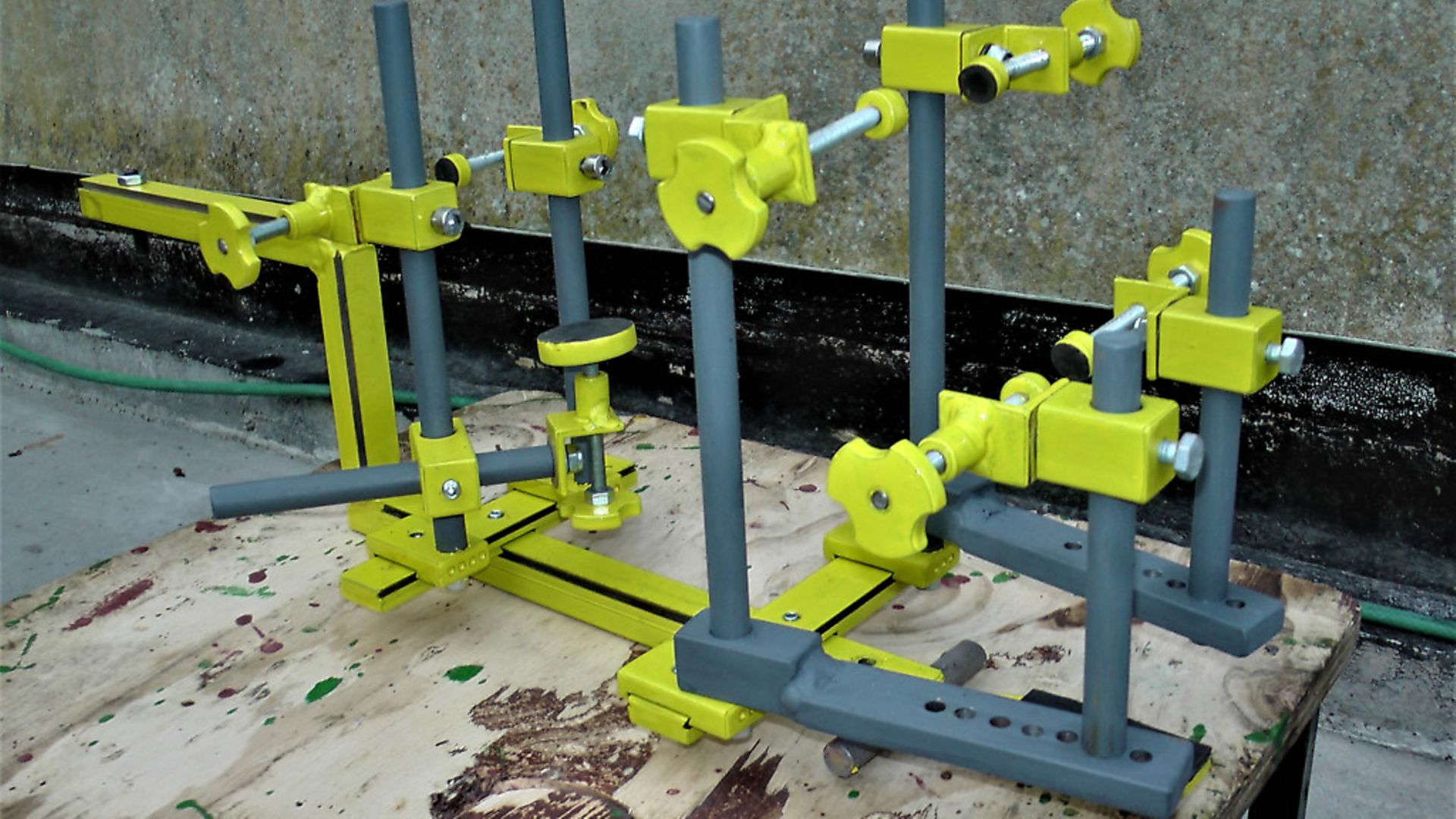
Airgun World reader, Steve Simpson, builds himself a superb gun vice
I started shooting in the mid-‘70s, using BSA springers. My last one was a second-hand .22 Airsporter, and I shot thousands of pellets through it over the 25 years it was in regular use. When I decided it was time to retire this gun and invest in a PCP, I bought a new .22 BSA Ultra, and within a few shots it was obvious that this gun’s accuracy was far superior to my worn out Airsporter. It was time that I did some serious pellet and gun testing, so I phoned Uttings and bought an assortment (30 tins) of pellets from most of the well-known manufacturers. The testing went well, but I wanted to achieve maximum accuracy, and to do that I needed to remove the ‘heartbeat’ moment, so I set to and designed this ‘aimable’ shooting vice. It sounds a bit drastic, gripping a gun in a vice, but all it does is gently hold the gun whilst I touch the trigger with a fingertip, and cycle through a full mag’.
The basics
Starting at the bottom is a dedicated tripod made from 80 x 40 x 3mm rectangular, hollow section legs bolted to the vice’s chassis, a 100 x 100 x 8 x 600mm RSJ, using M20 cap head socket screws.
The chassis is mounted on four adjustable, rubber-covered swivel pads, which are used for levelling the vice. Bolted to the ends of the chassis are two Vauxhall Cavalier stub axles and hubs, which make two swivelling turrets – the taper roller bearings in the hubs are over-tightened just enough to eliminate backlash.
Mounted on the left turret is the coarse elevation adjuster, comprising a six-flute, pink thumb wheel with horizontal and vertical dovetail rails on top, able to take guns up to 130mm wide and 120mm high. Mounted on the right turret is the fine elevation adjuster, in the form of a horizontal, pink knurled thumb wheel, and on top of the fine elevation facility are horizontal and vertical dovetail rails able to take guns up-to 130mm wide and 120mm high.
Left/right adjustment is done by the six-flute pink thumb wheel between the two turrets, connected to the right turret by two horizontal flat bars. Left, right and fine elevation adjustments are also 0% backlash. Coarse elevation is used for the initial set-up of the gun in the vice, whilst fine elevation, plus left and right adjustment are used during testing.
Maximum pistol
The gun is mounted between the two turrets, effectively connecting them together and all swivel pads in contact with the gun are covered with rubber.
The accuracy of this vice is as good as any scope on the market and it works exceptionally well. It really does test pellet and gun to their maximum potential, weather permitting of course. A full mag’ can be cycled through in seconds without having to re-aim the next shot, although this shot-to-shot accuracy depends on how easy the gun is to hold. My Air Ranger is a very solid, easy shape to hold, the Verminator not so much.
Most of the steel and other items I had left over from other engineering projects, so the vice cost very little financially to make, just a lot of time to design and construct – this is the MK 3 version.
Sub-frame needed
Last February, I bought a Weihrauch HW44 pistol and the first thing I wanted to do was pellet testing, but the vice was designed for rifles, so I made a sub-frame that accommodates a pistol.
The chassis of the sub-frame is a 20x20mm bar with a dovetail rail milled (milled, cut then welded) along its full length, and enough support arms and swivel pads to take virtually any shape of pistol. This pistol sub-frame and its support arms isn’t as stable and accurate as the rifle vice, but it works very well. Of course, a dedicated pistol vice would be better because stability and accuracy aren’t helped by the pistol having few flat surfaces with which to grip it, and also being made of plastic.
Target upgrade
When I first started taking pellet and gun testing seriously, I used the cut-out side of a cereal box as a target, with a grid of dots marked in black pen. Each dot was used for one make of pellet, and when a 10-shot string was complete, I made a note at the side of the dot giving basic info about gun, pellet make, distance and weather conditions. My latest design of card allows me to record much more detailed information. I’ve printed a test card on normal 80gsm (grams per square metre) A4 printer paper, but the holes were ragged and torn proving very little regarding grouping, so the heavier the card the better.
Pellet catcher
Over the past four decades, I’ve shot a serious amount of lead down the garden, but I didn’t want to poison the garden any more so I designed a target holder/pellet catcher at the same time as I got my first PCP. It measures 730w x470h, x350dmm; the back is 3mm steel plate, whilst sides, top, and bottom are 1.6mm. There’s enough space for three A4 cards, and each target card is held in place with a quick-release clamp bolted to the inner upper surface.
Definitely worth doing!
The 30 tins of pellets I bought from Uttings some time back are used for gun testing only. I do an annual gun test, and my test cards are saved and compared year on year, to see if there is any change in performance. When I find suitable pellet and gun combinations I chronograph the top three performing brands of pellet, print that ballistic info, and save for future reference.
Yes, creating my gun vice took lots of time and effort but I regard it as a great investment and it adds a new dimension to my shooting!
Related articles
Air rifles
News
Air rifles stolen from Polowood Shooting Ground
Polowood Shooting Ground has been hit by a raid, with thieves stealing around £30,000 worth of equipment, including air rifles
By Time Well Spent
News
Airgun shooters dodge lead ban
While shotgun and rifle shooters face switching to non-lead alternatives, the airgun community can carry on exactly as before
By Time Well Spent
Manage Consent
To provide the best experiences, we use technologies like cookies to store and/or access device information. Consenting to these technologies will allow us to process data such as browsing behavior or unique IDs on this site. Not consenting or withdrawing consent, may adversely affect certain features and functions.
Functional Always active
The technical storage or access is strictly necessary for the legitimate purpose of enabling the use of a specific service explicitly requested by the subscriber or user, or for the sole purpose of carrying out the transmission of a communication over an electronic communications network.
Preferences
The technical storage or access is necessary for the legitimate purpose of storing preferences that are not requested by the subscriber or user.
Statistics
The technical storage or access that is used exclusively for statistical purposes.
The technical storage or access that is used exclusively for anonymous statistical purposes. Without a subpoena, voluntary compliance on the part of your Internet Service Provider, or additional records from a third party, information stored or retrieved for this purpose alone cannot usually be used to identify you.
Marketing
The technical storage or access is required to create user profiles to send advertising, or to track the user on a website or across several websites for similar marketing purposes.


